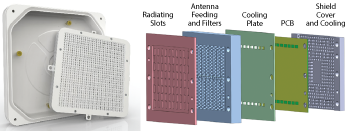
Figure 13 Active antenna system construction using Gap waveguide technology.
The properties of GAP waveguides make it suitable for designing active antenna systems. A schematic view of an active antenna based on the GAP waveguide technology is shown in Figure 13. Due to its contactless nature, GAP waveguide based antennas can be more easily integrated with PCB, as RF interconnects between the PCB and the antenna layers can be made without electrical contact. The pin structure also acts as a shield for the active components, protecting them from interference and preventing propagation within the substrate of the PCB. Removing the need for shielding walls and via holes frees up valuable circuit board space, which becomes available for the placement of active circuits and routing lines. The die-cast antenna layers also provide effective cooling for the active circuits from two sides. This is useful when integrating high-power amplifiers and CMOS based control circuits onto the same circuit board, which often require cooling from different sides.
Summary
There are many exciting new technologies such as 3D printing, metamaterials and fractal antennas, that promise to revolutionize antenna technology in the next few years. They will solve many challenges that traditional antenna technology has not been able to overcome and enable new antenna shapes and applications that are not even possible with traditional antenna technology. The unique new approaches will address many of the challenges faced today in 5G, IoT, SATCOM and radar applications.
References
- M. W. Elsallal, J. Hood and I. McMichael; T. Busbee, “3D Printed Material Characterization for Complex Phased Arrays and Metamaterials,” Microwave Journal, Vol. 59, No. 10, October 2016.
- www.kymetacorp.com/kymeta-products/, November 25, 2017.
- www.kymetacorp.com/why-kymeta-connectivity/, November 25, 2017.
- https://echodyne.com/products/, November 26, 2017.
- N. Cohen, “Fractals,” World Scientific Publishing, Vol. 20, Nos. 3 & 4, 2012, pp. 227–232.
- N. Cohen, “Wideband Omnidirectional Microwave Cloaking,” Microwave Journal, Vol. 15, No. 1, January 2015.
- www.microwavejournal.com/articles/27219, November 20, 2017.
- J. Anguera, A. Andújar and C. Puente, “Antenna-Less Wireless: A Marriage Between Antenna and Microwave Engineering,” Microwave Journal, Vol. 60, No. 10, October 2017.
- www.microwavejournal.com/articles/29472, November 22, 2017.
- www.microwavejournal.com/articles/29249, November 22, 2017.
- http://blog.gapwaves.com/what-is-a-gap-waveguide, November 26, 2017.

